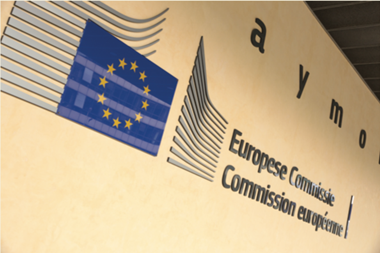Groups representing pension funds and providers in Europe have responded in detail to draft supervisory guidance published in April by the EU’s pension fund supervisor, including by warning that the Frankfurt-based authority is taking a level of EU harmonisation too far, that it involved a confusing re-definition of defined contribution (DC) schemes, and that its ideas could be too costly.
The European Pensions and Occupational Pensions Authority (EIOPA) published two draft opinions on 22 April this year – one on the supervisory reporting of costs and charges and another on the supervision of risk assessment by DC schemes.
EIOPA’s Occupational Pensions Stakeholder Group (OPSG), an official body including representatives from pension funds, lobby groups as well as academics, umbrella group PensionsEurope as well as its insurance equivalent Insurance Europe, have all produced responses to one or both of the consultations, which ended last week.
Regarding the opinion on the supervision of long-term risk assessment by IORPs providing DC schemes, the OPSG said the IORP II directive did not require a quantitative assessment of the operational risk, adding: “Therefore an opinion of EIOPA on this subject goes beyond the scope of IORP II.”
“Furthermore, it’s up to the IORP to determine if there is a need to use pension projections to complement the ongoing risk management or to use other risk management techniques which are equally suitable for the aforementioned purpose,” it said.
The OPSG made these comments in response to a question from EIOPA about the draft opinion’s focus on the quantitative elements in operational risk management and long-term risk assessment from the perspective of members and beneficiaries.
Defining DC
Elsewhere in its feedback, the OPSG said it strongly objected to the introduction of a new definition of DC schemes in the draft opinion.
EIOPA had canvassed responses to the scope of application of the DC-related opinion, which it proposed take in all IORPs providing schemes where members and beneficiaries bore material risks, rather than restricting itself to those providing schemes where members and beneficiaries bore all risks.
“Any scheme where the IORP or the sponsoring undertaking offer a guarantee is under all international definitions a DB [defined benefit] plan and should continue to be considered as such,” the OPGS said, adding that a new definition would only introduce confusion.
“The opinion should adopt the current internationally recognised understanding of DC scheme”
PensionsEurope
PensionsEurope and Insurance Europe also objected to what they saw as EIOPA’s broader definition of DC.
“The opinion should adopt the current internationally recognised understanding of DC scheme, i.e. only applying to schemes where members and beneficiaries bear all risks,” PensionsEurope wrote.
Insurance Europe said the definition would have far-reaching consequences, while bringing no added value to supervisory authorities or to IORP members and beneficiaries.
“On the contrary, it would create unnecessary additional costs and compliance burdens because DC IORPs are already subject to comprehensive regulation and supervisory scrutiny both at national and European level,” it said.
Costs concerns
Scrutinising EIOPA’s consultation on the draft opinion on the supervisory reporting of costs and charges of IORPs, PensionsEurope said it agreed costs were a key issue when considering the value for money that schemes delivered, but warned the authority its powers were limited.
“The IORP Directive takes a minimum harmonisation approach to accommodate the differences in SLL [member state social and labour law], which shape occupational pensions, as the EU legislator considered that there is only limited need for supervisory convergence in the pension field,” it said.
The pensions umbrella lobby also said it was “critical” that EIOPA considered and respected the heterogeneity of this sector.
In its response to EIOPA’s costs opinion, Insurance Europe made a related but more general point, saying it had noted the increased use of supervisory tools (Level 3) in relation to IORPs since the adoption of the IORP II Directive.
“During the negotiations on the Directive, policymakers willingly agreed not to introduce any Level 2 measures, leaving it up to member states to implement and supplement as they see fit the minimum harmonisation requirements it introduced,” it said.
“As a result, Insurance Europe feels that such detailed Level 3 provisions somewhat contradict the political agreement.”
Insurance Europe also commented that EIOPA’s proposals on cost reporting and on long-term risk assessment could significantly increase costs and compliance burdens for IORPs without, it said, adding clear value.
In general, InsuranceEurope responded to the consultations because it considers that requirements applicable to IORPs can have an impact on insurers, either directly or indirectly, although it said this varied greatly across Europe.























No comments yet